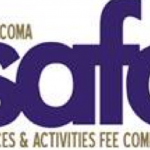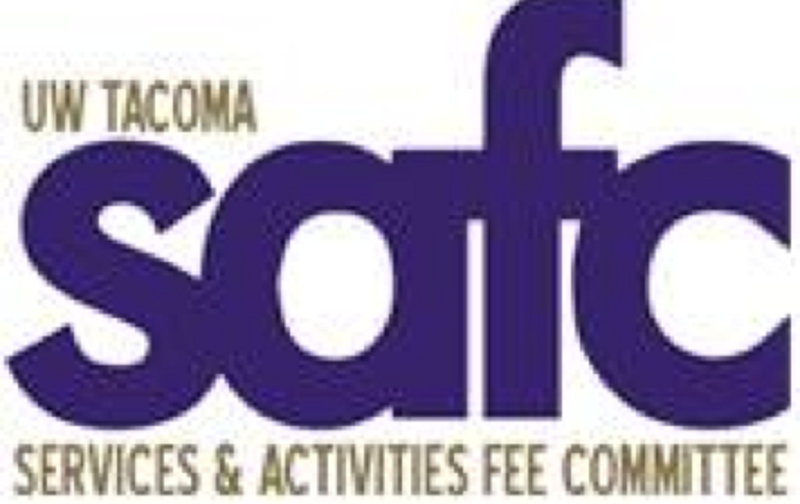Where does your Services and Activities Fee go?
Each academic year, the Services and Activities Fee Committee recommends to Chancellor Mark Pagano how the student Services and Activities Fee should be distributed amongst programs and services. Budget recommendation for the 2018–2019 school year were sent to Pagano May 4 based on allocation requests made by 16 UW Tacoma programs and services. On June 7, a final decision will be made by the Board of Regents which decides the budgets for all three UW campuses.
Student fees are based on the estimated budget for each school year. The 2017–2018 student fee was $159 per quarter for full time students. This fee that is included in tuition is charged at a prorated rate for part-time students. The fee is based on an estimated $2,096,000 in revenue that UWT hopes to recoup. The Services and Activities Fee has remained unchanged since the 2011–2012 school year.
The process of creating the fee allocation begins in winter quarter when allocation requests are received by the SAFC. During spring quarter, the preliminary budget is released and special allocations are announced and appealed. After this, budget recommendations are sent to the chancellor who eventually sends their recommendations to the Board of Regents. The Board of Regents gives the final approval of of the budget and sets the fee S&A fee for the following year. In autumn quarter, annual allocations are announced.
During autumn and spring, UWT programs and services can request additional funding. According to Dean of Student Engagement Ed Mirecki, who also serves as an ex officio member of the SAFC, the committee uses data, interviews with and presentations by programs and services, and student feedback to gauge how funds should be distributed — a task that is not always easy or simple.
“The committee tries to be very flexible and realizes it is not one size fits all,” Mirecki said. “Each program and service has their nuances. We respect and appreciate that. We try to collect data and also work with groups to talk through it. We are more than willing to find ways to do that and support that. Ultimately we want students to utilize these services, and if we can help tell that story of how students are utilizing and benefiting from these programs, we want to tell that too.”
Funds are allocated based on multiple factors that can vary from providing additional resources for professional development for full-time staff positions to providing support to increase wages for hourly student employees across all programs. Mirecki said the committee considers how programs and services fit into UWT’s mission and how well it serves students.
“Factors that they look at are if [the programs and services] use the university’s strategic plan,” Mirecki said. “Is the work of these programs and services aligned with what the University of Washington Tacoma says that we are about, but also what are students’ experiences with these programs? Are students feeling like there is a benefit?”
SAFC consists of seven students, four non-voting ex officio members and a compliance officer. Their meetings are open public forums. Associated Students of UWT invites students to apply to serve on the committee as well as makes member recommendations to the chancellor, who ultimately appoints student members.
Mirecki expressed the importance of student involvement and voice in SAFC decisions.
“I would love to see more students get involved,” Mirecki said. “You should have a voice in how that money is being spent, whether you are applying to serve on committee or coming out to committee meetings. It’s important. It’s over $2.2 million that they are making decisions about. These are significant and fundamental programs that some students really count on that are being funded. The more people who are involved or aware or are having input in the process, the more invaluable it becomes.”
ASUWT ex officio Emmet Kang, who is part of SAFC, said that students are not necessarily using the public forum.
“For some students, we don’t necessarily exist,” Kang said. “A lot of people don’t see the magnitude of SAFC. We do try to do outreach and have events show the logo to indicate that they are funded by SAFC.”
Kang acknowledged that making the meetings accessible to the public and members can be struggle. During the spring 2018 quarter, meetings have taken place most weeks and have been held at five locations on campus. Many of the meeting have been at 8 a.m. to try to accommodate as many people as possible.
“It becomes a tug o’ war on time,” Kang said. “How do we become more accessible and also contain all the committee members?”
UWT community members and the greater public are encouraged to check for and attend upcoming meetings related to the SAFC and ASUWT at washington.edu/publicrecords/special-meetings-notices
Those who can’t physically attend meetings can view meeting minutes at
tacoma.uw.edu/fundingcommittees/2018-19-saf-budget





